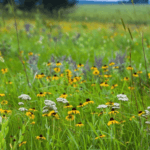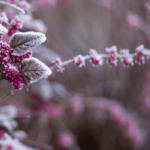
Beautiful flowers gardenia Plants For Your homes

Embrace the brilliance of a vibrant Celosia garden and discover the joy of nurturing these dynamic plants. Celosia flowers come in a range of colors like purple, red, orange, yellow, and white. They are perfect for summer gardens in warm climates. Learn how to grow Celosia and they’ll become the highlight of your garden.
These plants love to grow together, creating a stunning visual display. They add a splash of color to any garden. Our guide will help you care for these beauties, making your garden stand out.
Discover how to enhance your garden with these vibrant blooms. Use them to frame your garden with a colorful edge that catches everyone’s eye.
For those who love diverse and lush gardens, consider adding native species. Tropical gardens with Celosia can be especially rewarding. Learn more about planting in warm, humid climates like Fort Lauderdale at flowersgardenia.com.
Celosia plants stand out in any garden with their bright and unique flowers. They are known for their vivid colors and quirky shapes. These plants can turn a simple garden into a stunning scene. They are perfect for garden borders and containers, making a big impact.
Celosia plants are annuals or perennials in zones 10-11, thriving in warm places. They love full sun and are easy to care for. Just a little deadheading helps them bloom longer.
They start blooming in early summer and keep going until the first frost. This makes any Celosia flower a standout in the garden.
| Celosia Type | Height & Width | Color Varieties | Notable Features |
|---|---|---|---|
| Dragon’s Breath | Approx. 2 feet tall | Red-Green Foliage, Red Flowers | Blazing red feathery flowers |
| New Look | Varies; up to 2 feet | Dark with intense color plumes | All-America Selections winner 1988 |
| Castle Mix | Approx. 14 inches tall | Orange, Pink, Scarlet, Yellow | Elongated plumes, light-green foliage |
| Intenz | About 10 inches tall and 12 inches wide | Reddish-Violet | Spiky-textured blooms |
These unique Celosia varieties come in a range of colors and shapes. From the feathery plumes of ‘Dragon’s Breath’ to the bold spikes of ‘Castle Mix’. They add beauty and uniqueness to any garden.
Celosias are easy to grow from seed or starter plants. They bring year-round color and add biodiversity to gardens. Adding Celosia flowers makes your garden vibrant and a highlight from summer to fall.
Celosia flowers come in many forms and colors, offering gardeners and florists a wide range of options. You might love the lush plumes of Celosia Plumosa, the unique shape of Celosia Cristata, or the elegant spikes of Spicata Celosia. Each type has its own look and growing needs that can make any garden better. For more details on growing these beautiful flowers, check out this comprehensive guide to Celosia varieties.
Celosia Plumosa is known for its bright and full plumes that look like a fire blaze. These plumes come in red, orange, yellow, and pink, making any landscape pop. They’re perfect for fresh and dried flower arrangements, catching the eye with their unique texture and color.
Celosia Cristata has a brain-like or coral-like structure, known as cockscomb. Its soft texture and bright colors, from red to yellow, make it stand out. It’s great for adding an exotic touch to gardens or as a centerpiece, thanks to its strong and lasting beauty.
Spicata Celosia has long, wheat-like spikes that add elegance to any garden. These blooms come in pink, purple, and white and grow close together on tall stems. They’re perfect for adding texture to bouquets or height to garden beds. Plus, they’re tough enough for both fresh and dried arrangements.
Each type of Celosia has its own special features, offering gardeners many ways to add color and life to their spaces. From the soft plumes of Celosia Plumosa to the structured beauty of Spicata Celosia, there’s a Celosia for every taste and garden need. To keep Celosia thriving, it’s important to know how to care for each type, ensuring they bloom beautifully all season.
Starting Celosia in your garden is rewarding, whether you start with Celosia seeds or healthy transplants from a garden center. Celosia varieties come in many types, each suited for different gardens and tastes. Choosing seeds or plants, these flowers will brighten your garden.
To grow Celosia well, timing and care are key. Sow seeds indoors 6 to 8 weeks before the last frost. Keep them lightly covered with soil. They germinate in 7-14 days at 21-27°C.
For transplants, pick ones with strong roots but still young. Space them about 9 inches apart for best growth. This creates a lush, full garden with lots of flowers and leaves.
For more tips on growing these bright flowers, check out this guide on how to grow Celosia.
Looking after them is easy; just water and fertilize regularly. Remove dead flowers to keep the plant tidy and encourage more blooms. They love full sun and heat, so place them where they get lots of light. This helps them grow big and shows off their bright colors.
From planting seeds or young plants to seeing them bloom, growing Celosia is a journey of beauty and learning. With the right care, these plants will make your garden a colorful place. They add vibrant colors and textures to your garden.
For those who love gardening, making sure Celosia plants grow well is key. They need the right amount of sunlight, good soil, and the right food. These are the basics of Celosia care.
Celosias love the sun, just like plants from the Mediterranean. They need six to eight hours of sunlight every day. This sunlight makes them show off their best colors. So, putting them in a sunny spot is crucial for their growth.
Choosing full-sun locations is a must for Celosia care.
Good soil is key for Celosia plants. They do best in well-draining soil that’s full of organic matter. Adding compost helps keep the roots healthy and well-oxygenated.
It’s important not to overwater them, as this can harm the roots. If you’re growing them in pots, make sure the drainage is good.
Feeding your Celosias the right food is crucial for their color and life span. Start with a balanced fertilizer and give them high-phosphorus food every month when they’re growing. Adding organic stuff to the soil also helps them grow strong and colorful.
By following these tips, your Celosia plants will not just live but thrive. They’ll make your garden look amazing, whether they’re in beds or pots. These plants will stand out with their bright colors and unique shapes, ready for any season.
| Condition | Requirement |
|---|---|
| Light Exposure | 6-8 hours of full sun daily |
| Soil Type | Rich in organic matter, well-draining |
| Watering | Regular, avoid waterlogging |
| Fertilization | Monthly high-phosphorus supplementation during growth season |
Using these methods in your Celosia care will help your plants do great all season. This will make your garden more beautiful and interesting.
For those adding Celosia to their gardens, knowing if it’s an annual or perennial is key. Most Celosia grows as an annual in places not too hot. This makes it a great choice for gardeners who want constant blooms with the right care.
Whether you have the plumed feather or brain-like cockscomb types, keeping Celosia gardens bright requires some effort. Proper spacing, deadheading, and smart placement are important for their health and look.
Starting with the right spacing is key to caring for Celosia. Plant them 20 to 25 cm apart to let each plant grow well. This way, they won’t fight over resources and will show off their bright colors and flowers better.
Deadheading Celosia is crucial to keep it blooming longer and growing more. It means taking off the flowers after they’ve bloomed. This keeps your garden tidy and makes the Celosia flower more, which is great for those who want blooms from July to October.
For more tips on making your garden thrive, check out this blog on nature and garden aesthetics.
| Feature | Importance |
|---|---|
| Celosia Spacing | Promotes adequate air circulation and nutrient absorption |
| Deadheading Frequency | Encourages repeated blooming cycles throughout the growing season |
| Group Planting | Maximizes visual impact and supports a unified garden theme |
Propagating celosia is a great way for gardeners to keep their gardens looking vibrant. It means taking cuttings from a mature celosia plant to make new plants. This way, the plant can keep blooming year after year.
Start by picking a healthy celosia plant. Cut a 4-6 inch piece from the top of the stem, making sure to include several nodes. Then, remove leaves from the lower half to prevent rot. Put the stem in water or directly into soil.
For successful propagating celosia, keep up with regular care and watch over your plants. Make sure they get enough sunlight and have soil that drains well. With the right care, you’ll see a burst of colorful flowers all season long.
The world of gardening loves the many Celosia varieties out there. Each one adds its own special touch and color to gardens. The Bombay series celosia is a favorite for its unique brain-like flowers. It’s perfect for those who love vibrant Celosia colors. Let’s explore these series and see how they make gardens look amazing.
The Bombay series celosia is known for its detailed and textured flowers that look like a brain. It thrives in full sun and can grow up to 30 to 40 inches tall. This adds a tall, vertical look to any garden.
The Fresh Look series is great for gardens that get wet and dry. It’s tough but still looks beautiful, with feathery plumes that move in the wind. You can find it in many colors, from bright yellows to deep reds.
The Sunday™ and Castle series are the kings and queens of the garden. Sunday™ Gold has golden flowers against deep green leaves. Castle Scarlet™ has deep crimson plumes. These are perfect for adding a touch of royalty to your garden.
| Series | Color Variants | Height | Features |
|---|---|---|---|
| Bombay | Red, Pink, Yellow, Orange | 30-40 inches | Brain-like blooms, Full sun |
| Fresh Look | Yellow, Red, Violet | Compact height | Feathery plumes, Drought-resistant |
| Sunday™, Castle | Gold, Scarlet, Mixed | Varies | Radiant hues, Royal appearance |
Each Celosia variety brings something special to the garden. Whether it’s the unique look of Bombay, the strength of Fresh Look, or the elegance of Sunday™ and Castle series. Adding these to your garden means you’ll have a colorful and varied display all season long.
Celosias are known for their bright colors and unique look. They are easy to care for but can face pests and diseases. It’s important to know how to handle these issues to keep your Celosia garden healthy.
Overwatering is a big problem for Celosia plants, leading to root rot. This can destroy the plant’s health and energy. Make sure the soil drains well and check the moisture to avoid water problems. This keeps your Celosias strong.
Fungal diseases like powdery mildew and stem rot are dangers to Celosia plants. They love humid places and can spread fast if ignored. Keep air moving and reduce leaf wetness to help prevent them. For worse cases, use fungicides. For more info, check out this resource.
Pests like spider mites, aphids, and whiteflies harm Celosia by sucking sap from the leaves. This causes wilting and color changes. Using neem oil for Celosia is a natural way to fight these pests.
| Pest/Disease | Impact on Plant | Treatment |
|---|---|---|
| Root Rot | Wilting, yellowing, death | Improve drainage, reduce watering |
| Powdery Mildew | White/grayish powder on leaves | Enhance air circulation, fungicide |
| Spider Mites | Leaf damage, discoloration | Neem oil sprays, increase humidity |
To manage these issues, watch your plants closely and act quickly. This way, your Celosia plants will stay vibrant and beautiful in your garden.
Celosia shines brightly in the world of gardening, loved by both new and experienced gardeners. It can be grown as an annual or perennial, making it perfect for adding color to gardens everywhere. With its vibrant colors and various shapes, Celosia not only brightens up spaces but also offers many health benefits.
Studies show that Celosia has many health benefits. It can help treat coughs and even ovarian issues. Growing Celosia in our gardens means we have a source of traditional medicine at hand. Its antibacterial and anti-inflammatory properties connect us to a long history of natural healing.
Exploring Celosia’s beauty and uses shows how it can improve our gardens and health. By using smart gardening practices, we can help Celosia thrive. This plant does more than just look good; it can also help us stay healthy. From seed to flower, Celosia’s journey shows its many uses, from beautifying our gardens to supporting our health.




